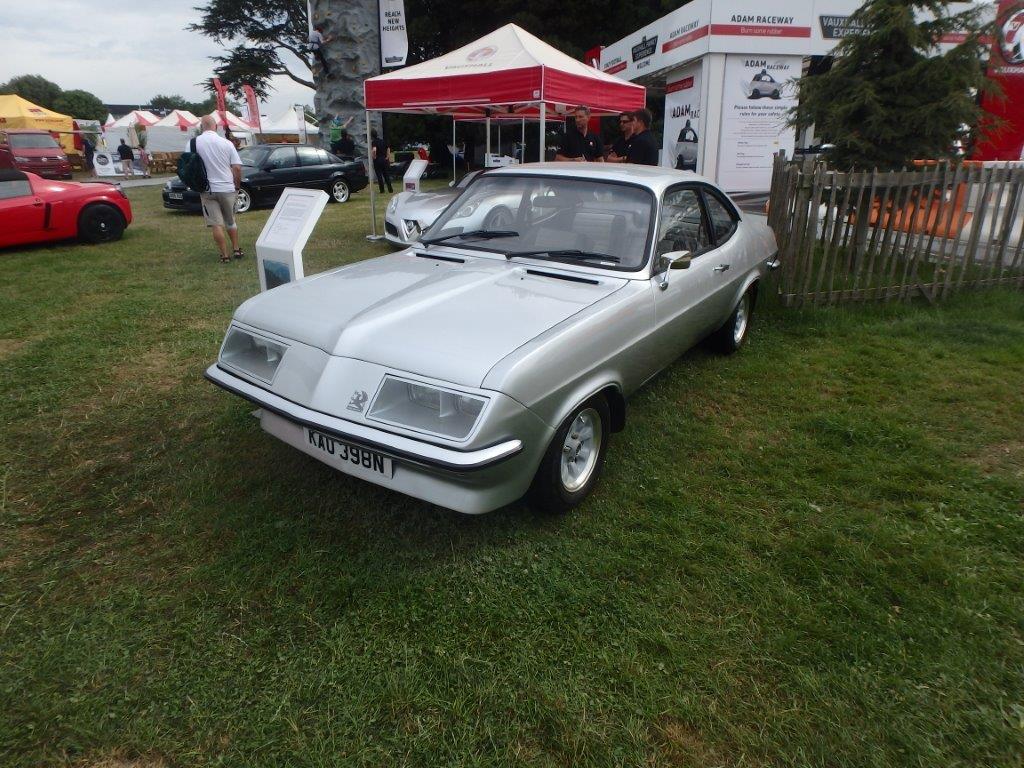-
Insurance
InsuranceAbout our productsLearn about insuringGet a quote Get current values, historical values, model history and more.
-
Valuation
ValuationHagerty valuation toolLook up a vehicle value Get current values, historical values, model history and more.
-
Events
EventsHagerty official eventsHagerty ClubhouseEvent calendar
-
Entertainment
EntertainmentMore to explore
- Portal login
1974 Vauxhall HP Firenza
Droop-Snoot Coupe 2.3 L
Vehicle values by condition
Fair
Condition 4
£6,900
#4 cars are daily drivers, with flaws visible to the naked eye. The chrome might have pitting or scratches, the windshield might be chipped.
Good
Condition 3
£12,500
#3 cars could possess some, but not all of the issues of a #4 car, but they will be balanced by other factors such as a fresh paint job or a new, correct interior.
Excellent
Condition 2
£15,900
#2 cars could win a local or regional show. They can be former #1 cars that have been driven or have aged. Seasoned observers will have to look closely for flaws.
Concours
Condition 1
£24,700
#1 vehicles are the best in the world. The visual image is of the best car, unmodified, in the right colours, driving onto the lawn at the finest concours.
Insurance premium for a
1974 Vauxhall HP Firenza Droop-Snoot Coupe 2279
valued at £12,500
£143.10
/ year*
History of the 1974 - 1975 Vauxhall HP Firenza

1974 - 1975 Vauxhall HP Firenza
The Vauxhall Firenza was built from 1971 to 1975. It was designed in-house under David Jones and is a stylish 2-door coupe with four seats. It has a front-mounted engine which drives the rear wheels.
The Vauxhall Firenza is based on the successful Viva HC and shares many common components with this car including the engines and gearbox. It was produced as Vauxhall's response to the burgeoning market for affordable GTs in the early 1970s. The front suspension is provided by twin wishbones whilst the rear has trailing arms and there are coil springs all round. The brakes were either discs or drums at the front with drums only at the back. The large boot and reasonable headroom make it a practical 4-seater.
The 1972 model year saw a minor facelift with improved interior and larger engines. In 1973 the larger engined cars were rebadged as Magnum in line with a similar exercise for the Viva. The best known version though is the Vauxhall Firenza HP, or as its colloquially known the 'Droop Snoot'. A fibreglass aerodynamic nose cone designed by Wayne Cherry was mated to the bluff front, the 2.3-litre engine was modified by Vauxhall collaborator Bill Blydenstein and a 5-speed ZF gearbox was substituted for the standard unit. Alloy wheels also helped to elevate this flagship model above its lesser brethren. All of the Droop Snoots are finished in silver with black framing to the windows and have a special interior.
The Firenza was launched with the 1159cc 4-cylinder engine along with the 1598cc and 1975cc 'slant 4'. Shortly after these were enlarged to 1256cc, 1798cc and 2279cc. As with other Vauxhall cars of this era the fuel and air were fed through Stromberg carburettors. Most versions of the car had a 4-speed manual gearbox fitted as standard with the Droop Snoot having a 5-speed gearbox.
Being Viva-based, the Vauxhall Firenza is similar to its less glamorous sibling in the way it drives, tending to wallow but at least being reasonable in getting around corners. In fact Gerry Marshal, amongst others, raced and rallied a number of Firenzas in the 1970s to great effect. The larger capacity examples benefit from having a torquey engine whereas the modifications to the HP improve both performance and handling.
The Firenza tends to rust at the front wings and sill, rotten bulkheads and floor are particular indicators of deeper corrosion problems. Most parts are available but front wings are scarce and expensive.
The Firenza HP is by far the most sought after example as it combines charisma, performance and rarity. Apart from this the Firenza is now such a rare car that finding one for sale is enough of a problem without trying to find a particular variant.
For alternatives look to the Ford Capri, the Opel Manta, or the Toyota Celica.
Hagerty Newsletter
Get your weekly dose of car news from Hagerty UK in your inbox

ADVERTISEMENT